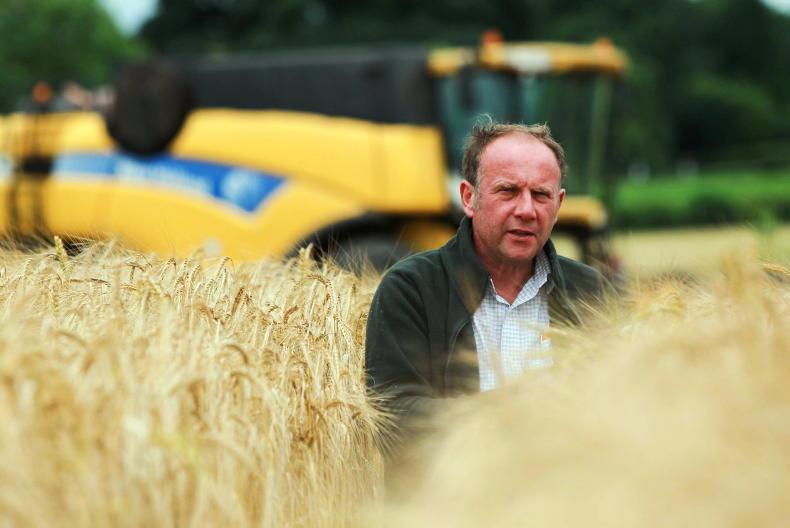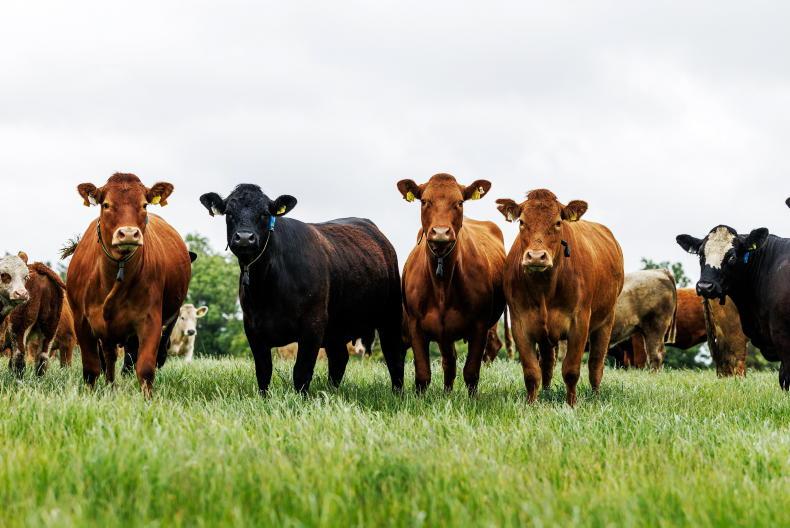When should I start spreading nitrogen and how much should I apply?
With the exception of very lowly stocked dairy farms, most dairy farms have a high demand for grass in spring and so spreading nitrogen to increase grass growth makes strong economic sense. This is because the grass grown by the nitrogen will displace silage and meal, which is between two and three times more expensive than grass and has much lower nutritional value which impacts milk yield.
Best response to early nitrogen will come when soil temperatures are over five degrees Celsius and rising.
Soil temperatures last week were between four and five degrees but are expected to increase this week.
In terms of rates, the advice is to apply between 19 and 23 units of nitrogen per acre in Feburary.
What response will that nitrogen deliver?
Irish research going back over 35 years has consistently shown the benefits of early spring nitrogen in terms of extra grass growth.
The average response is 10kg of grass dry matter per hectare for every 1kg of nitrogen applied per hectare. This is from N applied in mid-January and grass growth is measured up to mid-March.
As early nitrogen can now only be applied in February, the responses should be higher.
What does this mean in practice?
This means that if 20kg N/ha is applied now, it will grow 200kg DM pasture more than if no nitrogen was applied. If nitrogen costs €1/kg the cost of applying the nitrogen will be €20/ha and so the extra grass will cost 10c/kg DM.
If this grass is eaten by dairy cows it will displace meal and silage. Current silage costs are around 20c/kg DM and meal costs about 30c/kg DM. On top of that, animal performance will be improved so there is a strong economic argument to applying the nitrogen.
What about the weather?
Provided the nitrogen is not applied within 48 hours of heavy rain, urea based fertilisers are stable in the soil and have much lower risk of leaching compared to CAN based fertilisers. Soil temperatures are also a consideration.
Warmer soil temperatures increase grass growth anyway. With longer daylight hours the expectation is that soil temperatures will be warming up as move towards the end of February and into March.
Should it be spread everywhere?
Early nitrogen fertiliser should only be spread on a paddock-by-paddock basis. Fields that already got slurry applied this spring do not need any additional nitrogen in the first round of fertiliser.
Teagasc guidelines are that for every 1,000 gallons/acre of slurry applied in spring, it contains 9:5:32 in terms of N:P:K.
These rates will vary depending on the dry matter of the slurry but the baseline is 6.3% DM.
Therefore, if 2,500 gallons/acre of slurry was applied in late January, it would be the equivalent of spreading one bag/acre of 22.5:12.5:80 which highlights the amount of P and K contained in slurry.
Other considerations for where to spread include topics such as soil type and grass quality.
Heavy soils with waterlogged conditions will have a lower response than free-draining soils.
Old pastures with low perennial ryegrass content will also have a lower response to applied nitrogen at all times of the year, but particularly in spring.
What type of fertiliser should I spread?
Everyone agrees that CAN based fertilisers should not be applied in early spring as they are at greater risk of leaching in wet weather.
It is also a more expensive form of nitrogen compared to urea based fertilisers.
There is often a discussion about whether to spread ordinary urea or protected urea in the first and second round of applications.
It’s acknowledged that ammonia emissions from ordinary urea are at their lowest in springtime, so the agronomic benefits of applying protected urea versus ordinary urea are not as high compared to other times of the year.
However, if ordinary urea is applied the ammonia emissions factor will still be counted in the national inventory, same as if the urea was applied in mid-summer.
Secondly, Teagasc say there are higher ammonia losses with ordinary urea in early spring with a 13% difference in ammonia losses between ordinary urea and protected urea.
Speaking at a farm walk in Waterford recently, Teagasc Signpost Programme advisor Seamus Kearney said that the 13% of losses was equivalent to the value of about €60/t, which is more or less the difference in price between the two urea types.
Seamus said that farmers who are tight for N allowance should consider applying protected urea in order to maximise the efficiency of the applied N.
What’s the difference between units/acre and kg N/ha?
They are different methods for measuring the same thing, but it can get confusing. To convert units/acre to kg N/ha multiply by 1.25. To go the opposite way, to convert kg N/ha to units of N/acre multiply by 0.8.
Another form of measurement is to look at bags/acre.
This is even more crude but is still used by a lot of farmers. Essentially, one bag/acre is the same as however many units of nitrogen are in a 50kg bag of fertiliser.
One unit of nitrogen is the same as 1% of nitrogen. So CAN is 27% therefore one bag/acre of CAN is 27 units/acre of N or 33.75kg N/ha.
Urea is 46% nitrogen so a half-bag/acre of urea is 23 units/acre or 28.75kg N/ha.
Most Irish farmers think of fertiliser in terms of these three units of measure; units/acre, bags/acre or kg N/ha.
However, when looking at the fertiliser spreader charts – whether on an app or in the chart book – fertiliser spreading rates will be given in terms of kg/ha.
This refers to the kilos of actual fertiliser product being applied per hectare and is very different from kg N/ha, which is the kilos of actual nitrogen in the pure nutrient form being applied per hectare.
Therefore, to work out how much kg/ha you want to apply, divide the kg N/ha figure by the percentage of nitrogen in the fertiliser.
For example, if you want to spread urea (46% nitrogen) at a rate of 30kgN/ha, you divide 30 by 0.46, which is 65kg/ha.
When setting up the fertiliser spreader, check the correct settings for a 65kg/ha application rate.
How much for the rest of the year?
Table 1 looks at the N spreading advice from Teagasc for a highly stocked grassland farm spreading a maximum of 212kg N/ha. This is expected to be the new maximum fertiliser allowance for 2025, but is yet to be confirmed by the Department of Agriculture.
Slurry and soiled water applications are in addition to these recommended rates.
How to choose fertiliser spreader settings?
Correctly calibrating fertiliser spreaders involves tray tests and measuring the rate at which fertiliser is discharged on to the discs.
For the majority of farmers, applying the correct settings based on the fertiliser being applied should be the first step.
All reputable manufacturers of fertiliser spreaders will have settings charts either as a handbook or available as an app which can be downloaded to a smart phone.
These charts will detail the rate settings based on different speeds and spreading widths and also on the type of fertiliser being applied. They do this by testing various types of fertilisers under ideal conditions in large spreading halls.
The first step for a farmer is to pick the correct setting for the fertiliser type and the rate that they want to spread it at.
Remember, rates are displayed in kg/ha, which is the kilos of total product per hectare, not the rate of nutrient per hectare. This is discussed in more detail in a previous answer.
To work it out divide the amount of nutrient you wish to spread per hectare by the percent of nutrient in the product to get the kilos of product per hectare.For example, 35kg N/ha of 27% CAN is 35 divided by 0.27 (27%) which is 130kg/ha of CAN.
Next, go to the page in the spreading chart manual for the type of CAN being spread, e.g. Grassland Kilkenny CAN 27%.
The spreading chart will also detail different options for spreading widths and spreading speeds.
The number on the chart is the setting that the fertiliser spreader should be set at based on the type of fertiliser, the desired spreading rate, speed and width.
On some spreaders it will also be necessary to adjust the veins on the discs based on the different products to get the most accurate spread.










SHARING OPTIONS